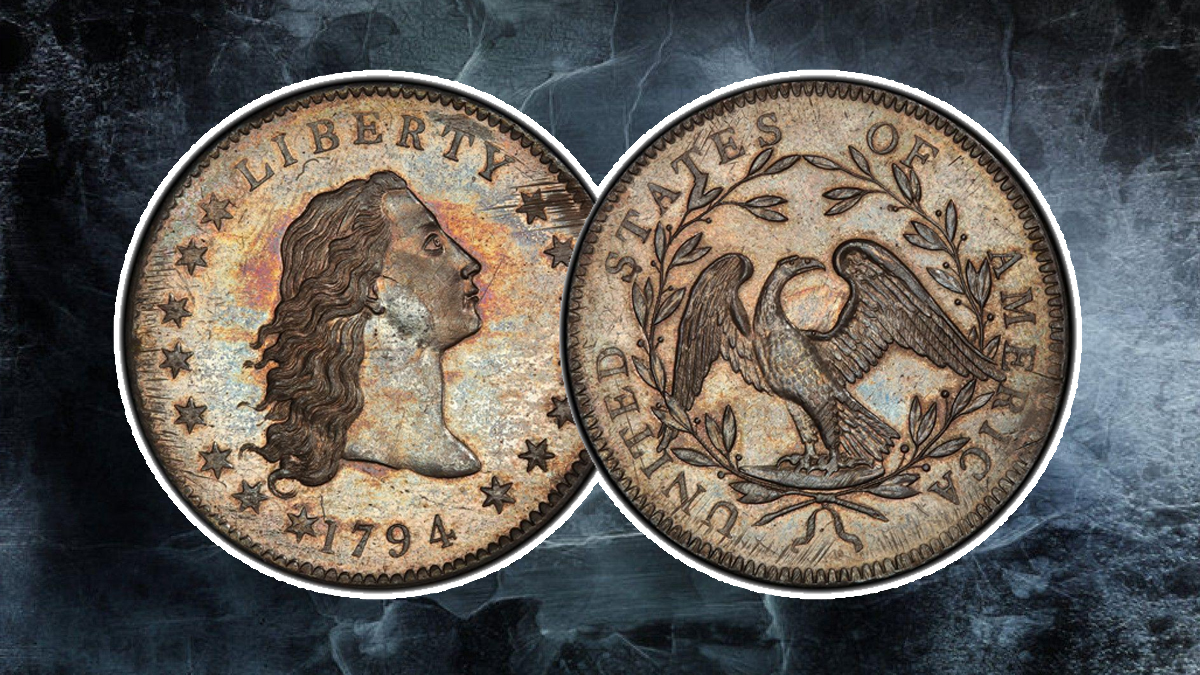
Rare coins that defy conventional valuation are exceedingly rare occurrences.
However, even the most wonderful finds in today’s market have excessive costs related to them. Take the silver dollar famous as the “Flowing Hair” from 1794. Collector Bruce Morelan made headlines in 2013 when he reportedly offered an astounding $10 million ($10,016,875 to be exact — a little rounding error in such enormous sums!).
The following coins are 10 rare coins sold at high prices in auctions that have traded hands in private sales. They are the most valuable coins ever sold also at auction:
How is a coin’s value determined?
When a coin is sold at auction, the coin needs to undergo an evaluation by experts. There are some different types of value coins can involve
- Book or “catalog” value
- Purchase price
- Retail Value
- Wholesale value
These several factors can affect the value of the coin, like rarity, demand, and condition or grade of the coin..
- Rarity relates to the mintage of coins originally produced, like the number of those coins still in existence.
- Demand can depend on the availability and popularity of coins rising and fall the value of the coin over the years. But to get the ideal cost at the time of evaluation, it’s essential to understand the current situation of demand..
- A coin’s condition, also known as grade, evaluates its overall appearance and physical quality. To make coin grades easy to follow for both beginner and expert collectors, specific criteria have been established. Coins in mint condition usually have greatly higher in value than those that are not. Understanding the value of a coin frequently involves knowledge about its grade.
Besides these factors, a coin’s value is also affected by its country of origin, date, and whether it’s a “general issue” or “commemorative.” Understanding the distinction between mint state and proof coins is crucial.
With several online resources available, even amateur collectors can gauge a coin’s value. PGCS provides price guides for nearly 350,000 U.S. coins, and the U.S. Mint’s website offers extensive information. For exact value assessment as well as accurate grading, it is essential to visit a professional coin evaluation, especially for gold, silver, or ancient coins.
10 Rare Coins Sold at High Prices in Auction
- 1933 Double Eagle PCGS MS-65 CAC
- 1794 Flowing Hair silver dollar PCGS SP-66 CAC
- 1787 Brasher Doubloon (EB on the wing) NGC MS-65 CAC
- The 1787 Fugio cent
- 1822 Half Eagle PCGS AU-50
- 1804 silver dollar PCGS PF-68
- 1861 Paquet Double Eagle PCGS MS-67 CAC
- 1804 Gold Eagle PCGS PF-65+ CAC
- The 1913 Liberty Nickel, PCGS PF-66 CAC
- 1907 Saint-Gaudens Double Eagle PCGS PR-68 CAC
1. 1933 Double Eagle PCGS MS-65 CAC:
The first coin to ever sell for over $5 million was a 1933 Saint-Gaudens Double Eagle. It sold in July 2002 for $7,370,000 to an anonymous buyer. There are only 13 of these coins left, with one being legal to own. It was once part of Egyptian King Farouk’s collection and later bought by a British dealer.
On June 8, 2021, it set a new world record selling price of $18,900,000. Two are at the Smithsonian, and ten others confiscated in 2010 by the U.S. government from the heirs of Israel Switt are reportedly stored at Fort Knox. All other coins were melted in 1933 after President Franklin D. Roosevelt made it illegal for Americans to own most gold.
2. 1794 Flowing Hair silver dollar PCGS SP-66 CAC:
The 1794 Flowing Hair silver dollar, PCGS SP-66 CAC, is seen as the first American silver dollar by many experts. It fetched $10,016,875 on January 22, 2013. Only 130 of the 1,758 struck survive, as the rest were melted because of poor quality.
They were likely made to impress VIPs about the new U.S. monetary system. The second-best, graded PCGS MS66+, sold for $4,993,750 in 2015 and $6.6 million in 2021. The U.S. Mint plans to release gold and silver tributes to this coin later this year.
3. 1787 Brasher Doubloon (EB on the wing) NGC MS-65 CAC:
The 1787 Brasher Doubloon (EB on the wing), NGC MS-65 CAC, was minted by Ephraim Brasher, a Philadelphia goldsmith and neighbor of George Washington, five years before the U.S. Mint started in 1797.
Only 7 were made, with 6 having an EB punch-mark on the eagle’s wing and 1 on the breast. They didn’t have a face value but were worth $15 back then. The one with the breast punch-mark, graded AU-50, sold for $7.4 million in December 2011. The finest graded example with the wing punch-mark, graded NGC MS65 CAC, sold for $9,360,000 in January 2021.
4. The 1787 Fugio cent
The 1787 Fugio cent, also known as the Franklin cent, possibly the first coin circulated in the US, carries a unique history. It depicts a sun and sundial with “fugio” (Latin for “I flee”), urging attention to time. Below, it reads “Mind your business,” reminding people to focus on their affairs.
On the reverse, “We are one” with 13 chain links represents the 13 states. You can get one for a few hundred dollars, but better-condition ones may cost a few thousand or even reach $10,000. Very rare versions could fetch tens of thousands.
5. 1822 Half Eagle PCGS AU-50:
The 1822 Half Eagle, PCGS AU-50, is the rarest U.S. gold coin, with only 3 known examples. Two are in the Smithsonian, leaving just one in private hands. It sold for $8.4 million in March 2021, making it a cornerstone for collectors.
This AU-50 specimen, the finest of the three, was auctioned only twice before, in 1906 and 1982. It passed through three collections before the current owner acquired it.
6. 1804 silver dollar PCGS PF-68:
The 1804 silver dollar, PCGS PF-68, was once the most valuable American coin until 2002. There are 15 known examples, minted in 1834 or 1835, not 1804. President Andrew Jackson had them made as gifts for foreign dignitaries during trade missions.
Numismatists found the coin in 1842, and some restrikes were made secretly due to high demand. These are categorized as Class I, II, and III. Only the Smithsonian has examples of all three types. In 2013, a Class I sold for $3,877,500, and in 2021, another fetched $7,680,000.
7. 1861 Paquet Double Eagle PCGS MS-67 CAC:
The 1861 Paquet Double Eagle, PCGS MS-67 CAC, looks like other Liberty double eagles but has modifications by Assistant Mint Engraver Anthony Paquet. Only two are known, and the finest sold for $7,200,000 in August 2021.
Initially considered experimental, it’s now seen as a regular issue. Paquet’s changes, like taller and thinner lettering, were adopted for the 1861 coin. Concerns about die durability led to most being melted, except for a few. Orders to destroy New Orleans and San Francisco in 1861 double eagles mostly succeeded, except for 19,250 made in San Francisco due to delayed communication.
8. 1804 Gold Eagle PCGS PF-65+ CAC:
The 1804 Gold Eagle, PCGS PF-65+ CAC, was produced when the U.S. Mint stopped making $10 gold coins in 1804. President Andrew Jackson wanted special proof sets for diplomatic gifts in 1834-1835, so the Mint combined dies from 1804 with 1830s minting tech. Six were made; 3 remain, one in a museum and two privately owned. One sold for $5,280,000 in 2021.
9. The 1913 Liberty Nickel, PCGS PF-66 CAC
The 1913 Liberty Nickel, PCGS PF-66 CAC, has a mysterious origin. Although the Mint records show no Liberty Head nickels in 1913, Samuel Brown, a Mint clerk, bought them later and displayed them at a convention in 1920. There are five known, with varying ownerships and prices, including one sold for $5 million in 2007 and one owned by King Farouk, which sold for $3,737,500 in 2010
10. 1907 Saint-Gaudens Double Eagle PCGS PR-68 CAC:
The 1907 Saint-Gaudens Double Eagle, PCGS PR-68 CAC, showcases the remarkable design by sculptor Augustus Saint Gaudens. Around 15-20 of these coins, struck in Ultra High Relief, exist. They were experimental strikes aimed to achieve the desired high level of relief, which Charles Barber, the Mint’s Chief Engraver, deemed impractical for mass production due to the multiple coin press strikes required.
Each piece required nine strikes for all the details to appear, including one given to President Teddy Roosevelt for his daughter’s wedding. One of the finest-known graded PCGS Proof-69, sold for $2,990,900 in 2005. Another, graded PCGS Proof-68 CAC, sold for $4,750,000 in December 2021.
Also Read – Top 10 Valuable Lincoln Wheat Cent
Conclusion:
The extraordinary market value and rarity of these rare coins appear in their extraordinary price. From the famous “Flowing Hair” silver dollar of 1794 to the modern Saint-Gaudens Double Eagle of 1907, every coin has a backstory. Their value is mostly determined by factors including condition, demand, and rarity.
